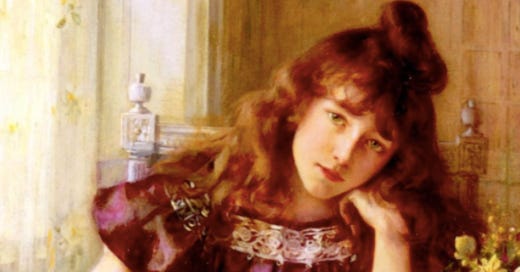I was looking up historic inks when I came across a phrase I had never heard before: “green-ink letters.” The term is apparently well known abroad. It’s typically used to describe the grouchy correspondence that a writer (or other public figure) might receive from a member of the general public.
Back in the days before we had comment sections or Twitter to express our disgust, people used to sit down and write furious letters to their object of loathing. Green ink is “considered the medium of the lunatic fringe” in the UK, according to Tony Bridges at Pen Vibe, who also notes that it’s a “mystery” how the trope got started. No one really knows why green is the color of sensitive readers but the Guardian even asked their readers to please refrain from using grassy hues in their letters to the editor. (They also advised never to start with “So,” which I found annoying. I’ll so if I want to!) The Gentleman Stationer notes that there’s “a tradition of green ink being used by MI6 and the British intelligence services, so you’re not necessarily labeling yourself as a nut by signing that memo to your boss in green.” (He goes on to recommend his favorite green inks: Montblanc’s Irish Green and Bungubox Norwegian Wood Emerald, which both look lovely to my untrained eyes.) According to the Gentleman, everyone “needs” a good green ink because navy and black can get boring. Fair point.
The idea that green is a bad color is a very old, very Christian one. While many religions around the world consider green the color of life, growth, and health, green was the color of ghosts, witches, and the devil himself for medieval Europeans. (The devil was also red so I suppose he just liked a Christmasy palette? Hmm.) I wouldn’t go so far as to say that white people have historically disliked green, but I do wonder if it has something to do with our complexion. Pale people get more visibly green around the gills.
Personally, I think it’s funny that there’s such a nice little old fashioned euphemism for unsolicited feedback. It strikes me as exceedingly likely that some green ink letters had a point. I also have no doubt that some of them contained inappropriate language and rather intimidating threats. Some were probably unhinged and some were probably quite fair. The term could be minimizing or dismissive; so many writers still want to paint all contact and criticism with the same brush. A good rule of thumb? When in doubt, burn your letters and delete your tweets.
Or you could always take a page out of Nic Cage’s book and always use invisible ink.
Image: detail from The Letter by Albert Lynch (c. 1900)




Oh this is so interesting! I have an ex whose grandmother once spurned a nightdress I got her for Christmas, because it had green ribbon on it “and belonged to the Other Folk.” I had a lot of fun researching a long feature for The Scented Letter magazine on green fragrances awhile ago (which are also considered ‘difficult’); and a shorter blog piece for them on the same subject, here: https://perfumesociety.org/enviably-green-verdant-leafy-joyful-fragrances-for-right-now/
This is so interesting! My dad's family all believe that green is bad luck but no one knows why. My paternal grandmother said it was something to do with the folks of Scottish heritage who were prevalent in Nova Scotia, where she was born and raised. And maybe it's connected to this as well!